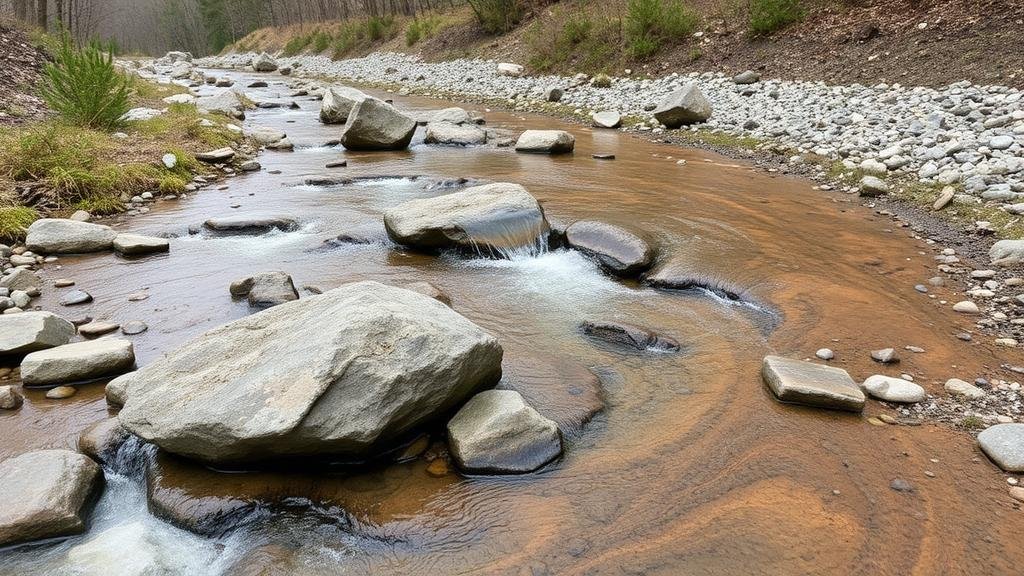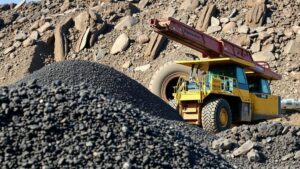Spotting Mineralized Zones Along Streambanks With Heavy Sediments
Spotting Mineralized Zones Along Streambanks With Heavy Sediments
Identifying mineralized zones is critical for geologists, miners, and environmental scientists. Streambanks often accumulate heavy sediments that can act as clues to the underlying geology, revealing valuable mineral deposits. This article explores the techniques used to spot these mineralized zones, the importance of sediment analysis, and the real-world applications of such practices.
The Role of Heavy Sediments in Geology
Heavy sediments, primarily composed of sand, silt, clay, and minerals, play a significant role in the geological landscape. r deposition along streambanks often hints at the geological processes occurring upstream. Understanding these sediments is essential for identifying mineralized zones. Heavy minerals such as gold, magnetite, and zircon frequently concentrate in these areas due to their high density and resistance to weathering.
Identifying Mineralized Zones
Spotting mineralized zones along streambanks involves several techniques. Here are key strategies that geologists employ:
- Field Surveys: Conducting on-site examinations of streambanks can provide immediate insights. Geologists look for visual indicators like discoloration, unusual textures, or the presence of specific minerals.
- Sampling and Testing: Collecting sediment samples for laboratory analysis is crucial. Chemical assays can determine the concentration of minerals, while X-ray fluorescence (XRF) can identify elemental composition.
- Geophysical Methods: Utilizing tools like ground-penetrating radar (GPR) can unveil subsurface structures and mineral concentrations without invasive digging.
The Importance of Geochemical Analysis
Geochemical analysis of sediment samples helps quantify the presence of economically significant minerals. For example, studies show that approximately 67% of gold deposits in certain areas of the Sierra Nevada can be traced back to stream sediment sampling. The following analytical methods are widely employed:
- AAS (Atomic Absorption Spectroscopy): This technique is useful for detecting trace amounts of metals in sediments and water.
- ICP-MS (Inductively Coupled Plasma Mass Spectrometry): Ideal for multi-element analysis, ICP-MS provides detailed information about a wide range of minerals and metals.
Case Study: The Dawson City Gold Rush
The Dawson City Gold Rush in Yukon, Canada, provides an exemplary case of how mineralized zones along streambanks can lead to significant discoveries. Gold was found not only in placer deposits but also concentrated in sediments along the Bonanza Creek. Geologists analyzed sediment samples, which revealed high quantities of gold nanoparticles, leading to extensive mining operations that transformed the region.
Environmental Considerations
While spotting mineralized zones can be lucrative, it is essential to consider the environmental impact. Sediment disturbance during exploration can lead to habitat destruction and water quality degradation. So, following responsible mining practices and regulations, such as those outlined by the EPA, is crucial in minimizing ecological damage.
Future Trends in Mineral Exploration
The future of mineral exploration is leaning towards integrating technology with traditional techniques. Machine learning algorithms can analyze sediment data to predict mineralization more accurately. Plus, drones equipped with advanced sensors can monitor expansive areas, offering real-time data for geologists.
Actionable Takeaways
For those interested in identifying mineralized zones along streambanks with heavy sediments, consider the following actionable steps:
- Conduct thorough field surveys, looking for mineral indicators along streambanks.
- Use geochemical analysis to confirm the presence of valuable minerals through sampling and advanced testing methods.
- Stay informed on technological advancements in mineral exploration to enhance your identification efforts.
- Prioritize ecological integrity by adopting responsible exploration and mining practices.
By applying these techniques and considerations, individuals can effectively spot mineralized zones along streambanks, contributing to sustainable mineral exploration and resource management.



